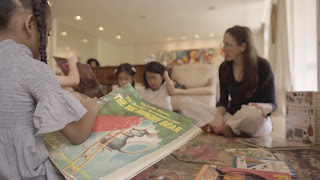The contents of any educational curriculum are a collection of material and conceptual resources. For instance, learning how to write involves utilizing material resources like a pencil and paper, as well as conceptual resources, such as the alphabet and developing an understanding of the phonetic relationship between letters and their sounds. In play-based project design, material and conceptual resources equip children to solve problems when they are mobilized in play and in the real life situations that they often emulate.
When educators support children to build up their tool chests of material and conceptual resources they broaden children’s repertoire of possibilities to make more conscious, responsive and deliberated decisions. Thinking about the Contemporary Education Framework, by raising children’s conscious awareness of the wide range of practices for participating in real world activities and the theoretical inquiry of what sustains those practices children can learn about the material and conceptual resources used over time and across cultures.
They can use these resources to deliberate upon theory and practice to take positions in real world activities that they can more fully put their agency behind and be held accountable by others.This is part of a larger series of This series discusses play-based project design through the organization of space, time, resources and relationships. This segment of the series will focus on the organization of resources as key to the design of a play-based project.
These resources can be introduced inside the imaginary, pretend play situation or outside of it through:
- Sustained Inquiry
- Reflective Dialogue & Guided Feedback
- Prototyping Resources
- Sustained Inquiry can amplify children’s tool chest of actions (Awareness of Practices). It can connect actions to conceptual meaning to take more intentional and deliberate action (Theoretical Inquiry) and frame and critically reflect upon problems and create innovative, transformative responses (Deliberate Theory and Practice). This can be done through:
- Bibliographic reviews, including reading and discussing fiction and non-fiction books; exploring video scenes, skits, puppet shows and improv scenes; sharing personal accounts; and listening to eye-witness testimonies, such as guest speakers.
- Field work, such as: conducting interviews, surveys and questionnaires; bringing in show and tell realia; making observations and doing experiments; and going on field trips, amongst other researching activities.
- Exploring conceptual meaning through: discussions, role plays, diagrams, graphic organizers, charts, tables, sketches, posters/flip charts with post-it notes, mind maps, concept maps, pictograms, etc.
- Identifying problems, raise hypotheses (as well as their assumptions), test them and frame issues for further exploration through prototyping a storyboard, simulation, animation, concept artwork, demo, mock up, model, etc.
2. Reflective Dialogue & Guided Feedback
By engaging children in reflective dialogue and guided feedback, children can become more aware of the material and conceptual resources that are used in the real world activities often emulated in play. They can critically reflect upon their own use of material and conceptual resources in play to make more deliberate, informed choices about how to use them.
Educators and children can question what happened while they were playing? What material and conceptual resources were utilized in problem-solving? Was there any divergence in how these resources were used? What might the future implications be of such resource use? Moments of reflective dialogue and guided feedback support children to build a broader repertoire of material and conceptual resources that can empower them to frame problems and innovatively solve them.
3. Prototyping Resources
In all moments of play, educators and children can prototype material and conceptual resources. They can experiment with material and conceptual resources and try out new ways of using them. For example, when playing “clothing shop”, children could make belts and hair accessories out of scraps of fabric, thereby promoting a more ecologically sustainable type of “clothing shop”.
By putting play-based project design at the center of the teaching and learning process, the organization of resources needs to be planned, as well as the organization of time, resources and space.
Join me in transforming education to meet the challenges of the 21st century by checking out Contemporary Education on:
YouTube Channel: https://www.youtube.com/@contemporaryeducation
















No comments:
Post a Comment